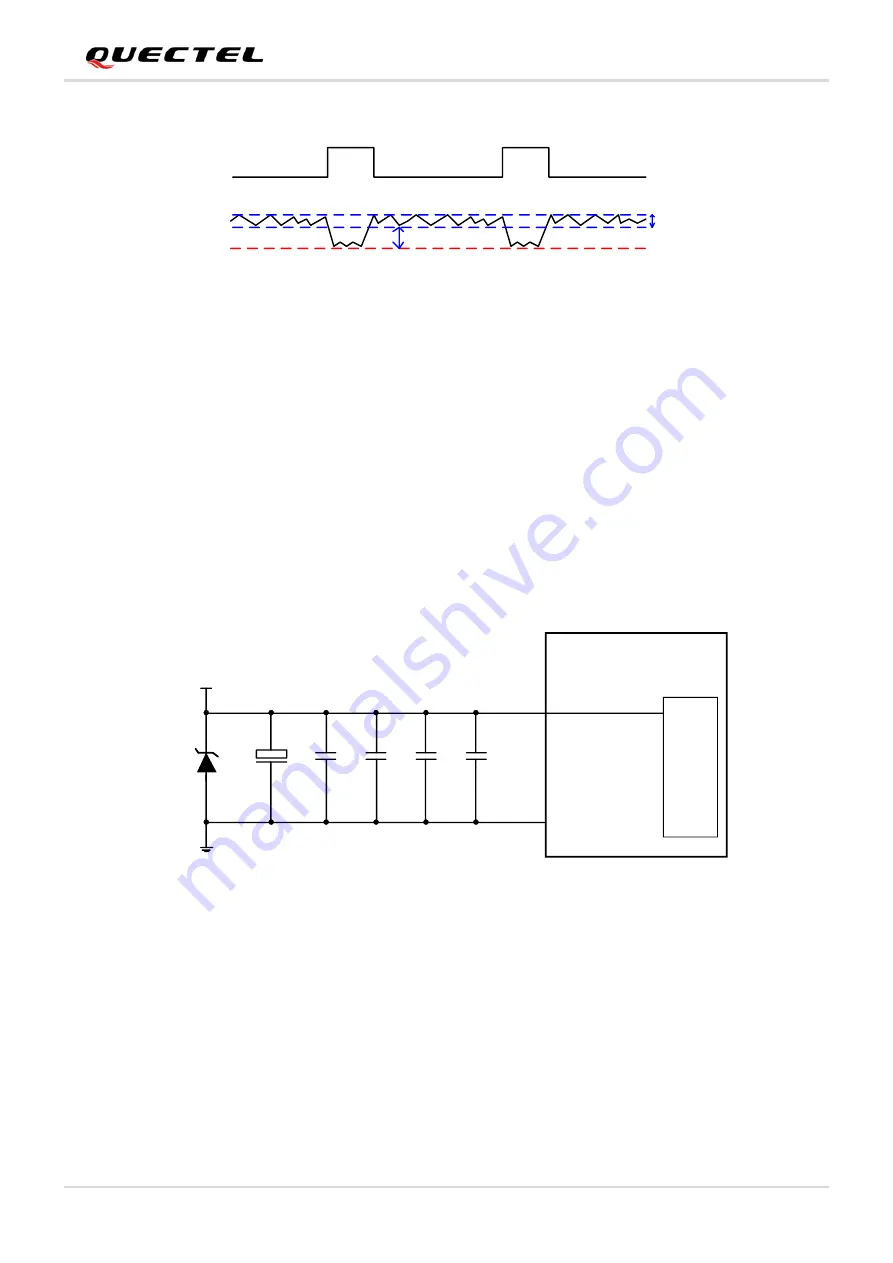
5G Module Series
RM502Q-GL Hardware Design
RM502Q-GL_Hardware_Design 22 / 77
VCC
Max Tx power
Min.3.135V
Voltage Ripple
< 100mV
Voltage Drop
Max Tx power
Figure 3: Power Supply Limits during Radio Transmission
The main power supply from an external system must be a single voltage source. To decrease voltage
drop, a bypass capacitor of about 100 µF with low ESR (ESR = 0.7
Ω) should be used, and a multi-layer
ceramic chip capacitor (MLCC) array also should be used due to its ultra-low ESR. It is recommended to
use four ceramic capacitors (1 µF, 100 nF, 33 pF, 10 pF) for composing the MLCC array, and place these
capacitors close to VCC pins. The width of VCC trace should be no less than 2 mm. In principle, the
longer the VCC trace is, the wider it should be.
In addition, in order to get a stable power source, it is recommended to use a zener diode with a reverse
zener voltage of 5.1 V and a dissipation power of more than 0.5 W. The following figure shows a
reference circuit of VCC.
Module
PMU
2, 4, 70, 72, 74
C1
100
μ
F
D1
5.1V
3, 5, 11, 27,
33, 39, 45,
51, 57, 71,
73
VCC
VCC
GND
C5
10pF
C4
33pF
C3
100nF
C3
1
μ
F
+
Figure 4: Reference Circuit of VCC Pins
3.3.2. Reference Design for Power Supply
Power design for the module is very important, as the performance of the module largely depends on the
power source. The power supply is capable of providing a sufficient current of at least 3 A. If the voltage
drop between the input and output is not too high, it is suggested that an LDO is used to supply power for
the module. If there is a big voltage difference between the input source and the desired output (VCC =
3.7 V Typ.), a buck DC-DC converter is preferred as the power supply.
















































